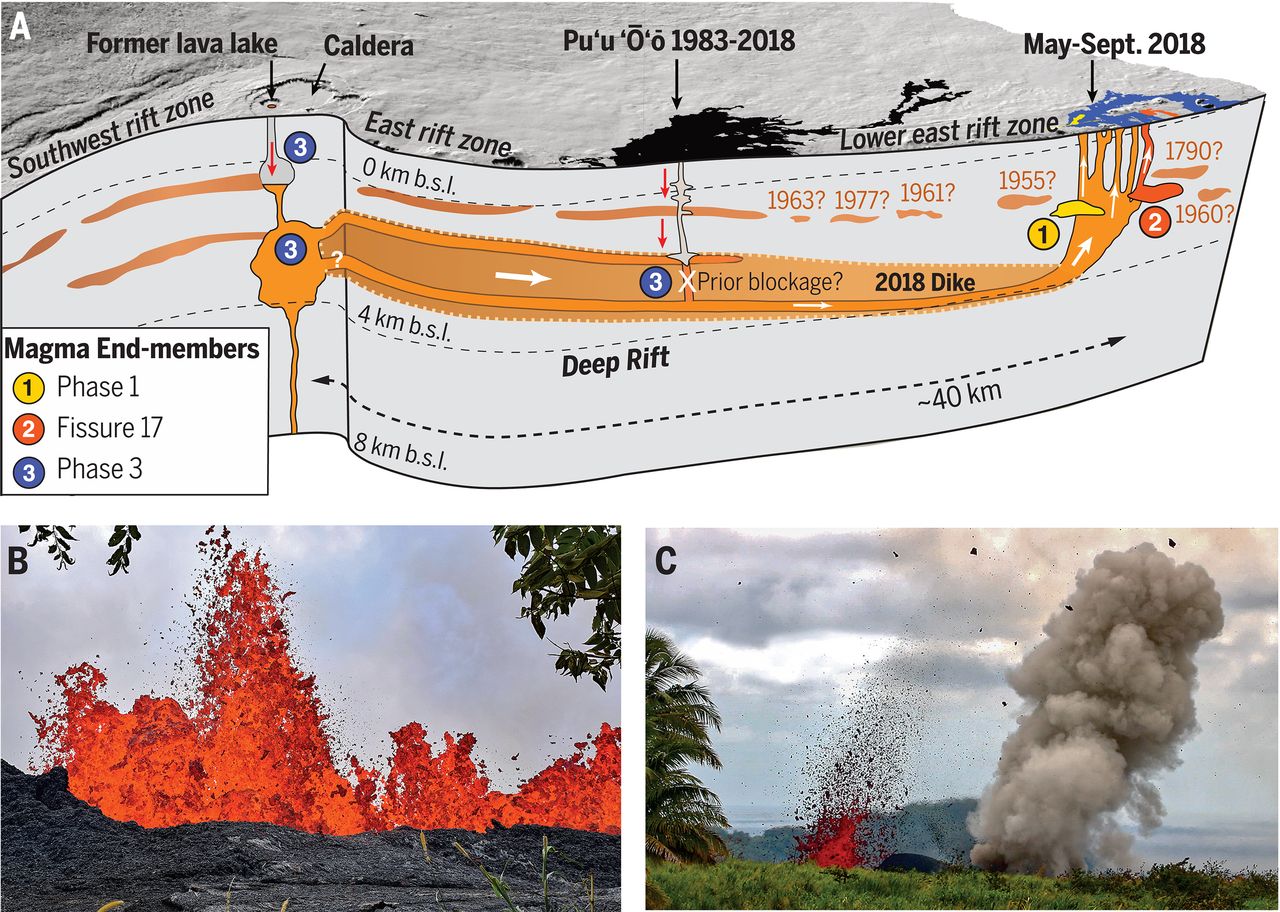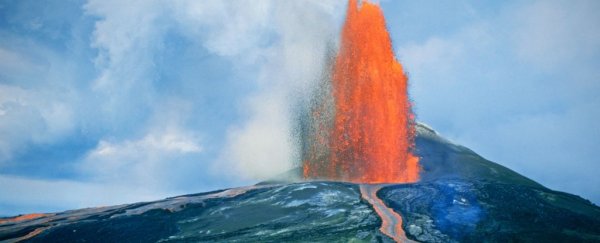The sounds of sloshing lava are music to a volcanologist's ears. The reverberating belches and burps can help reveal what's going on deep within a volcano's belly.
Putting an ear to the Kīlauea volcano in Hawaii has allowed researchers to track the temperature of magma and the migration of volcanic gasses as they bubble to the surface.
The findings have revealed something unexpected about the volcano's famous 2018 eruption.
"It's a new view into the dynamics of a really popular volcano," says earth scientist Leif Karlstrom from the University of Oregon.
"People could stand near the lava lake rim and visit the lava flows coming out. But under the surface, there was lots more going on."
For 10 years, between 2008 and 2018, the Kīlauea volcano experienced gentle eruptions of lava on a near-continuous basis.
Then, suddenly, two dozen vents above the east rift zone exploded, shooting fountains of molten rock into the air.
The eruption was followed by several years of silence, until September of 2021, when the oozing of lava began again.
Kīlauea is often said to be the most active volcano in the world, and much of that fussiness comes from within the Halema'uma'u crater. This crater sits on the top of the volcano and is filled with a lake of lava.
The lava lake is thought to be constantly topped up by an underground chamber of magma. But how those deeper dynamics work is still largely unknown.
By positioning seismic sensors around the crater, researchers are hoping to penetrate the boiling hot abyss.
The technique they are using is similar to listening to the tone a half-filled bottle makes when you tap it. As with the bottle, the vibrations ringing through the volcano depend on its contents.
"Once something physically disturbs the magma chamber or the lava lake, it sloshes around, and we can measure that with seismometers," explains geophysicist Josh Crozier, also from the University of Oregon.
"Over this decade-long eruption, we detected tens of thousands of such events. We're combining this data with a physics-based model of processes that create these signals."
The researchers aren't really sure what the noises mean yet, but they are hoping to learn Kīlauea's 'tune' so they can better predict when the volcano will explosively erupt again.
Without taking any direct measurements of the lava lake itself, the team has been able to track bubbling gas and changing temperatures over the course of eight active years.
Strangely enough, right before the 2018 eruption, the authors didn't notice any signs of magma influx into the lava lake.
The temperature and chemistry of the lava lake were largely consistent in 2018. Nothing dramatically changed before the eruption.
This means that an influx of magma probably wasn't what triggered the outburst, as scientists once thought.
Instead of the underground magma chamber feeding the lava lake until a high enough pressure was reached, it seems the explosion actually occurred from the opposite process.
Lava appears to have drained out of the main system and spread eastwards via a 10-kilometer-long underground tunnel. This was what likely triggered the major east rift eruption, which ultimately destroyed 700 homes and displaced more than 2,000 people.
 (Gansecki et al., Science, 2018. Photos by US Geological Survey)
(Gansecki et al., Science, 2018. Photos by US Geological Survey)
Above: Simplified model of Kīlauea's magma system feeding the 2018 lower east rift zone eruption.
Kīlauea might be one of the best studied volcanoes in the world, yet its plumbing is still very much a mystery.
Researchers don't yet fully understand the true nature of the volcano's lava lake, its rift zone, or its underground magma sources.
The deep reverberating sounds of lava could one day help us hear what we are not able to see.
The study was published in Science Advances.
